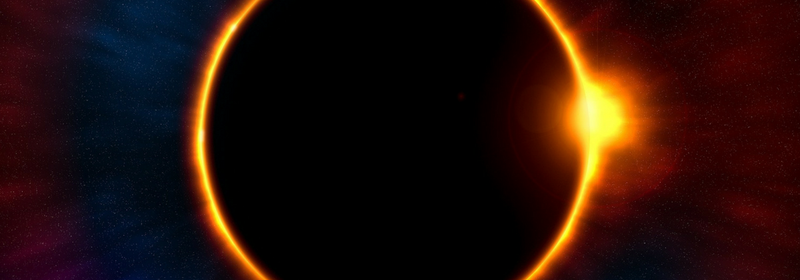
Math and the Solar Eclipse
Mathematics is the best language we have to help us understand and express the amazing universe into which God has placed us as His crowning jewels to bring Him glory for all He has done! What will you discover using math?
Article Header
« Return to Main PageMath and the Solar Eclipse
Mathematics is the best language we have to help us understand and express the amazing universe into which God has placed us as His crowning jewels to bring Him glory for all He has done! What will you discover using math?
I hope you got a chance to enjoy the total solar eclipse on August 21, 2017. I was at Bob Jones University, in Greenville, SC, which was along the path of totality. They had a wonderful eclipse event and we had a great time looking at the heavens and being awe-struck by what God has made.

We’re not the first people to be stunned by the beauty of a total solar eclipse. What God has placed in the heavens is incredible and down through time people have been fascinated by what they’ve seen. I was reading an article recently that featured in interview with famous mathematician Stephen Wolfram. He talked about the ancient Antikythera mechanism, an ancient computing device. This complex device, invented over 2,000 years ago, was able to predict eclipses (among other things). Sadly, this technology was lost for centuries.
This computing device reminds us that mankind isn’t getting smarter as time goes on. God created us in his image from the beginning so mankind was very smart to begin with. We see this in the first few chapters of Genesis, when mankind is building cities, forging metals, and playing musical instruments within mere centuries of Adam. Actually, because of the Curse brought by the Fall, mankind is getting less smart as time goes on!
But back to mathematics and solar eclipses. Total eclipses are only possible because of geometry, distances, sizes, and ratios—in other words, because of math! Here’s how you can test this for yourself.
- Hold a light source (your iPhone or a pen light) up at arm’s length;
- Take a coin (start with a quarter) and hold it in front of your eye;
- Move the coin toward the light source until you barely see light (called the corona) coming around the edge of the quarter—that’s the point of a total eclipse (also called totality);
- Make some observations; what is the distance of the coin from the light source? distance from your eye? size (diameter) of the coin? size of the light source?
In mathematics, like any language, we need a naming system so we can easily reference things in our formula (the way we express mathematical thoughts). Let’s try this naming system:
- DE2L; distance of eye from light source
- DC2E; distance of coin from eye
- SC; size of coin
- SL; size of light source
In a total eclipse, the apparent size of the moon is the same as the apparent size of the sun, from the perspective of the observer. It turns out the ratio of the moon to the sun is almost the same as the ratio of the distances between the sun and moon and the moon and the earth.
Here’s the data:
- SC (diameter of the moon) = 2,159 miles
- SL (diameter of the sun) = 864,575.9 miles
- SL / SC = 864575.9 / 2159 = 400.45201
- DE2L = 93,000,000 miles (approximately at the time of total eclipse)
- DC2E = 239,000 miles (approximately at the time of total eclipse)
- DE2L / DC2E = 389.12133
Try punching your numbers into the formula I used above and see what you get!
Because these two ratios (italicized) are very close to the same, we experience a total solar eclipse. If the moon were smaller or the distance greater, it would not cover the entire sun. But if the moon were larger or the distance shorter, it would cover too much of the sun to see the awe-inspiring corona.
Mathematics is the best language we have to help us understand and express the amazing universe into which God has placed us as His crowning jewels to bring Him glory for all He has done! What will you discover using math?








